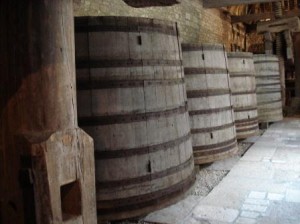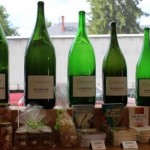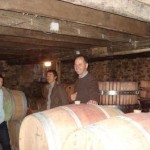Wines from Languedoc-Roussillon

Languedoc-Roussillon
Overview
A large region with the climate and geography suited to growing lots of different varietals. Much of the affordable wine exported from France is from this region, usually labelled as Vin de Pays d’Oc – some if it is good, some not so good.
Location
Located in the south of France, the Languedoc-Roussillon region stretches for 240km, from Provence in the east along the Mediterranean coast to the border of Spain in the west. It is the largest wine producing region in France, with 700,000 acres under vine compared to Australia’s 420,000 acres. Another big region with many terroir, wine styles vary from sparkling to Syrah to sweet fortified wines. Growing regions are widely dispersed, from the foothills of Massif Central to the coastal plains of the Mediterranean.
Climate
Generally a Mediterranean climate, with dry, windy winters, warm sunny summers and rain in spring and following the autumn harvest, the Languedoc is very suited to wine growing and produces many varieties. Grapes grown near the warmer coastal regions produce wines that are full bodied, smoother and less acidic, while those on the foothills of the Massif Central are more cool climate – crisp and lighter bodied.
Major Varieties
Nearly 30 grape varieties are grown in the Languedoc- Roussillon. White varietals include Chardonnay, Sauvignon Blanc, Marsanne, Roussanne and Viogner. Among the reds, varietals include Grenache, Syrah, Mourvedre, Cabernet Sauvignon and Cinsault, which is commonly used to make rose.
Appellations
Over recent years this region has undergone a complete restructure which created three levels of appellation – the Languedoc regional appellation, sub-regional appellations based on terroir (there are 17 of these), and the ‘land names’ at the heart of the sub-regional appellations.
Languedoc AOC
The Languedoc regional appellation, which was extended in 2007 to cover the whole of Languedoc and Roussillon. Prior to 2007, was known as the Coteaux du Languedoc.
Sub-regional AOCs
There are 17 of these. Some of the well known names include Minervois and Corbieres. Muscat is predominant in the Languedoc under four appellations, the largest being Muscat de Frontignan. These wines are known as Vins Doux Naturels, naturally sweet wines fortified with brandy. Sparkling wine is produced around the area of Limoux under three appellations, with the best known being Cremant de Limoux, made predominantly from the little used Mauzac grape.
Land Names
Smaller areas within the sub-regional AOC’s, currently these land names are under the umbrella of an AOC and must be shown as such on the label. For example, wines from the region of La Clape are currently designated ‘Coteaux du Languedoc, La Clape’ or ‘Languedoc, La Clape’, depending on vintage. Some of these areas (including La Clape) are applying for full AOC designation and if granted they will no longer need to include the umbrella AOC.
Other Wines
Much of the wine from this region is sold as Vin de Pays (around 66%), which can include the broad classification Vin de Pays d’Oc or sub-regions such as Vin de pays d’Aude. 14% of wine is sold as Vin de Table or Vin Ordinaire. The remaining 20% is AOC standard and includes both table wine and Vins Doux Naturels.




